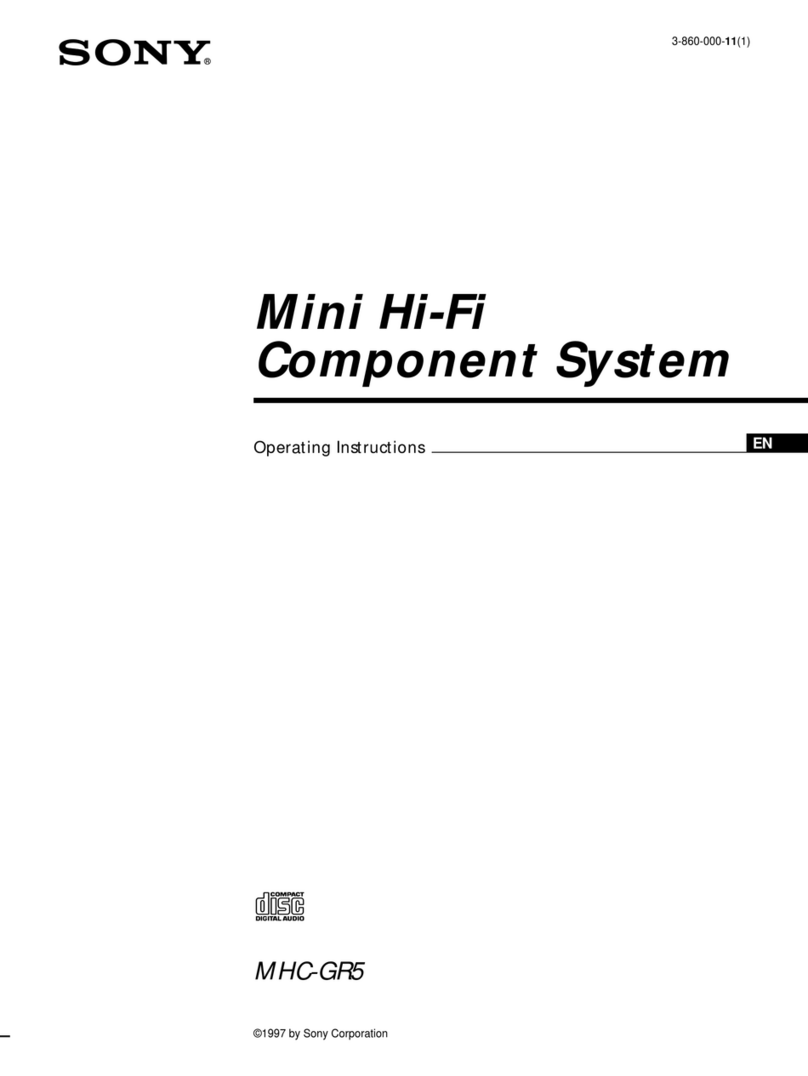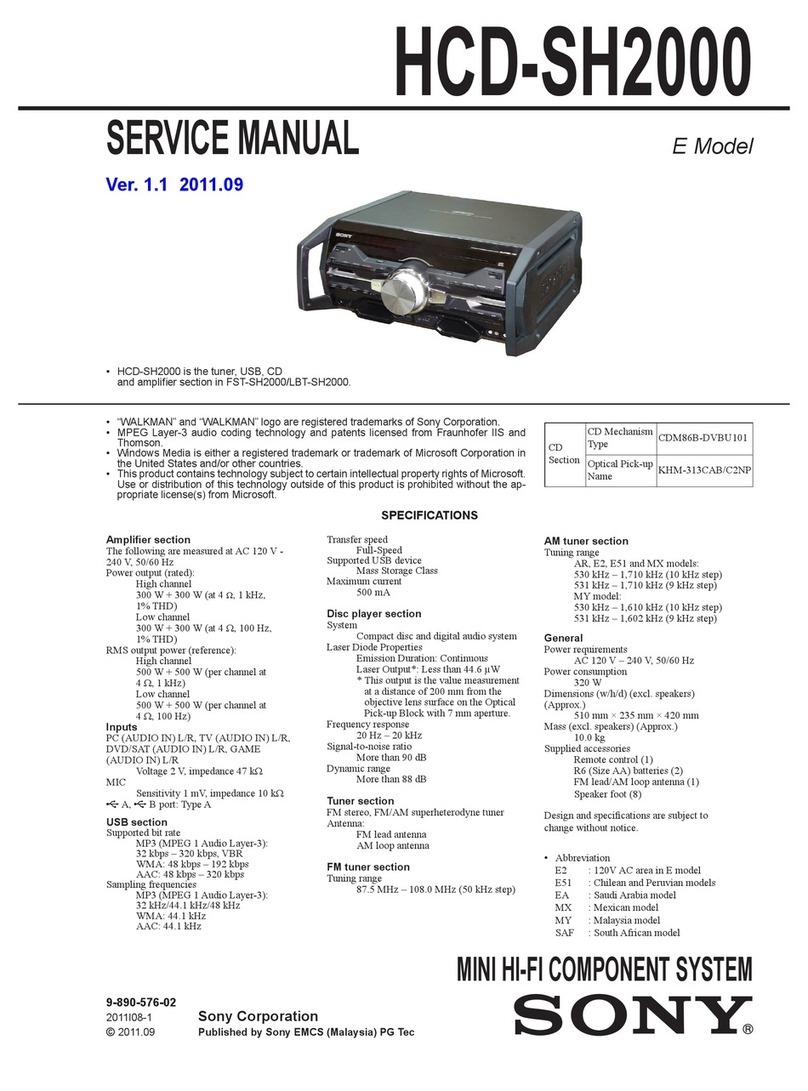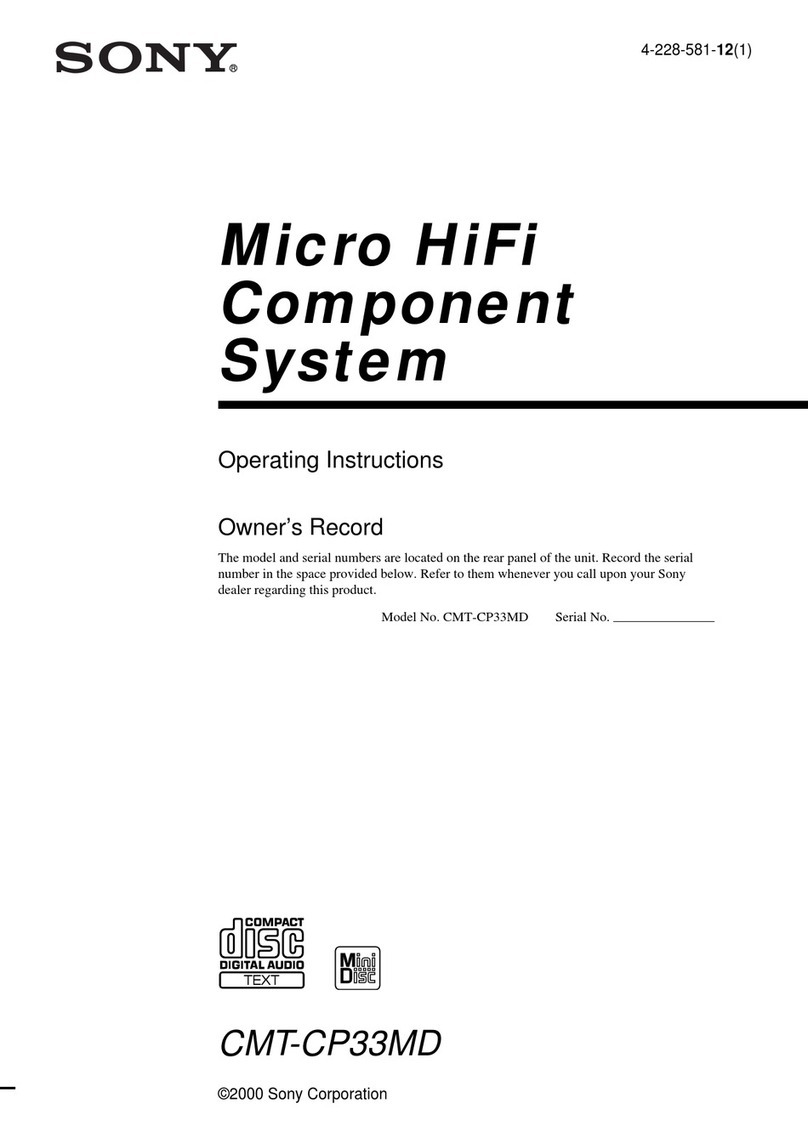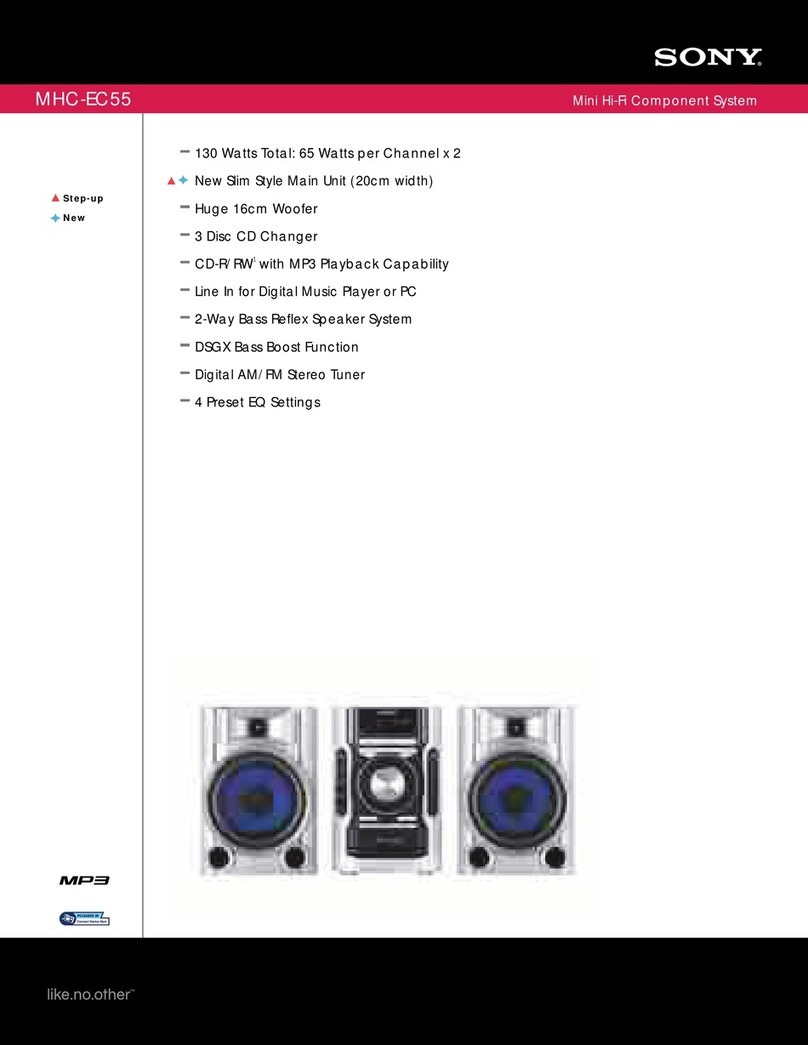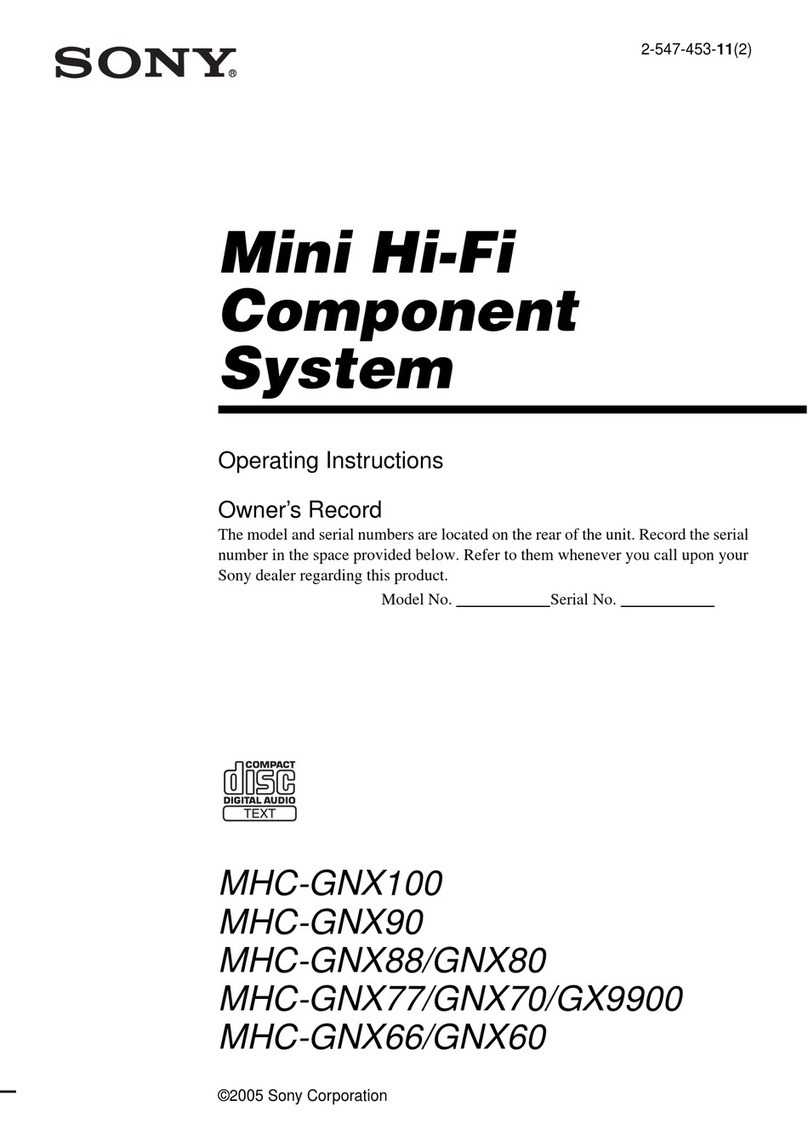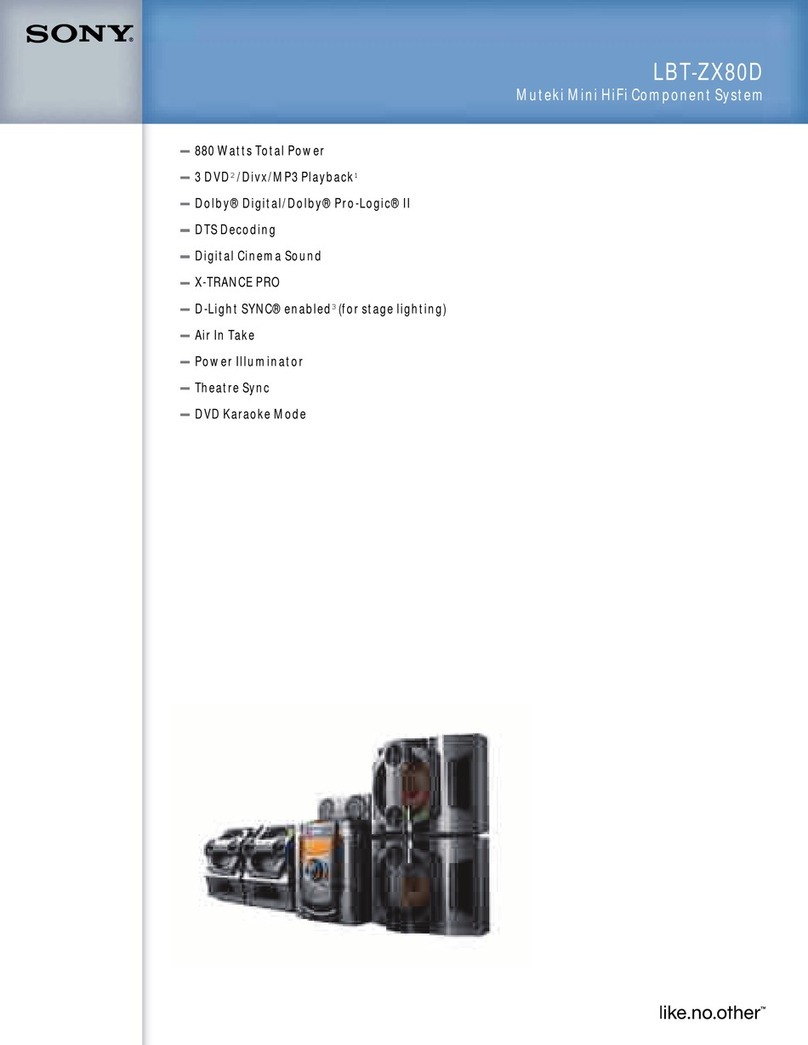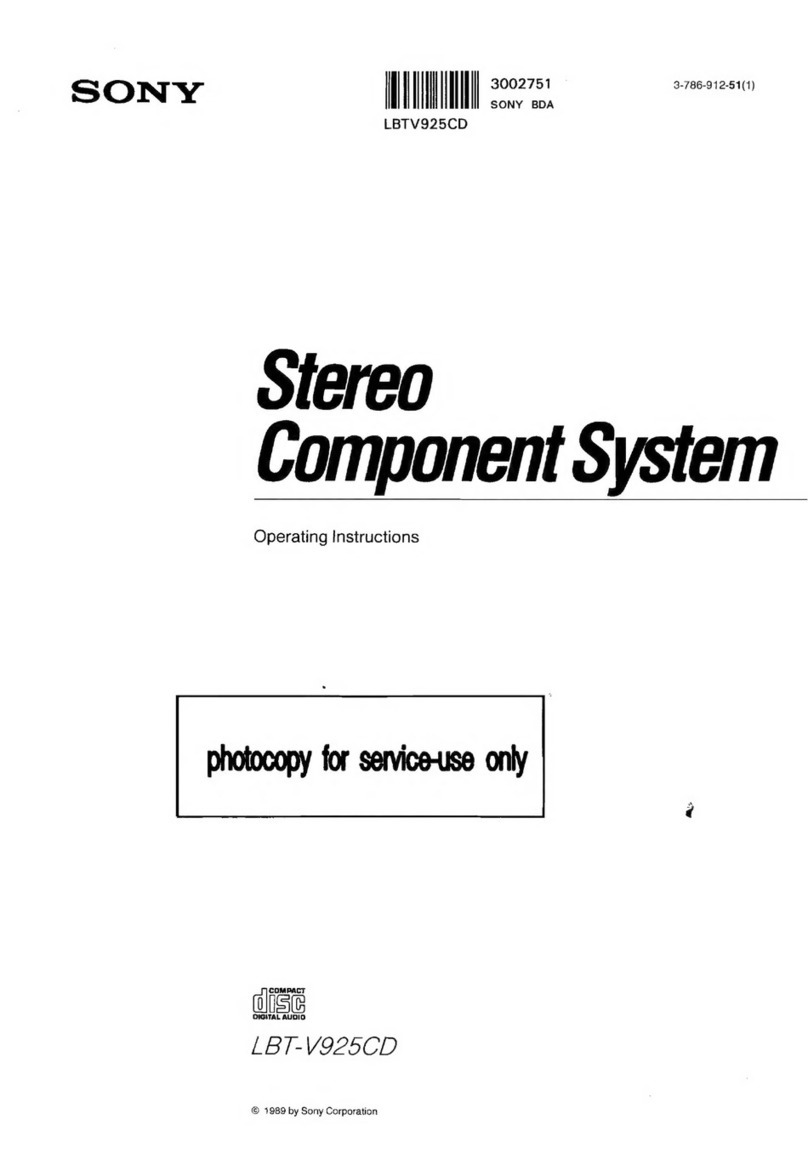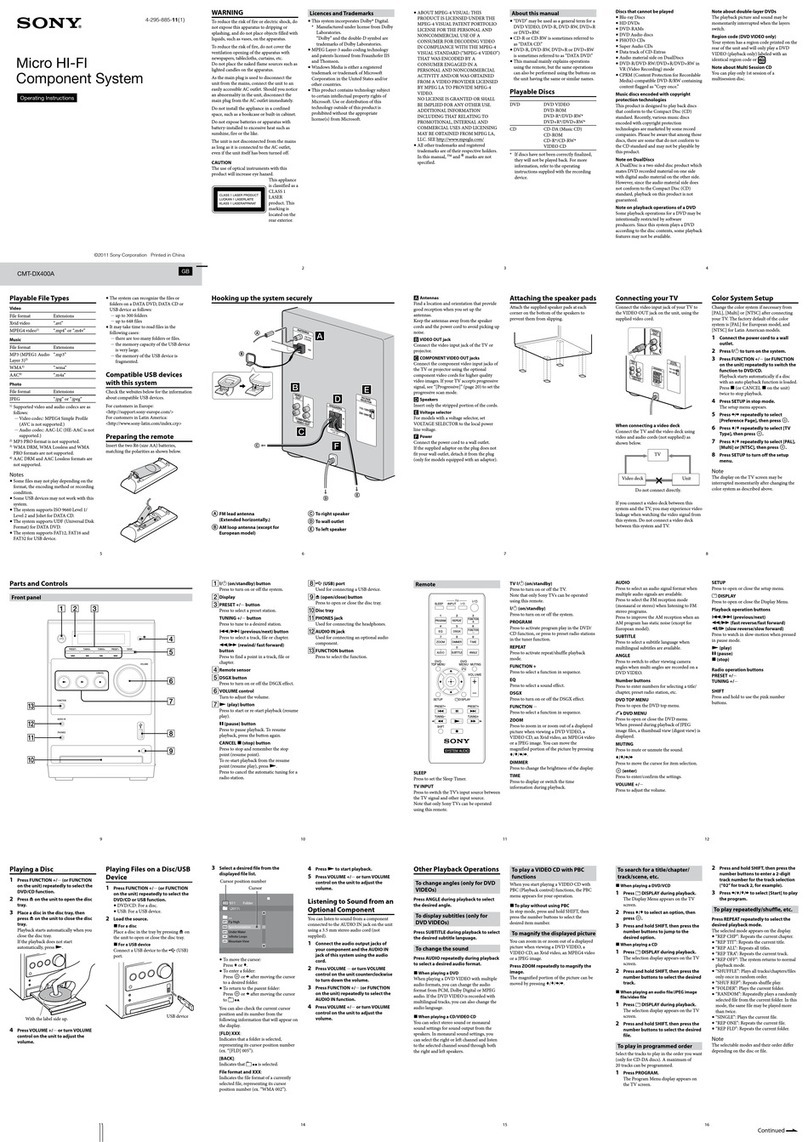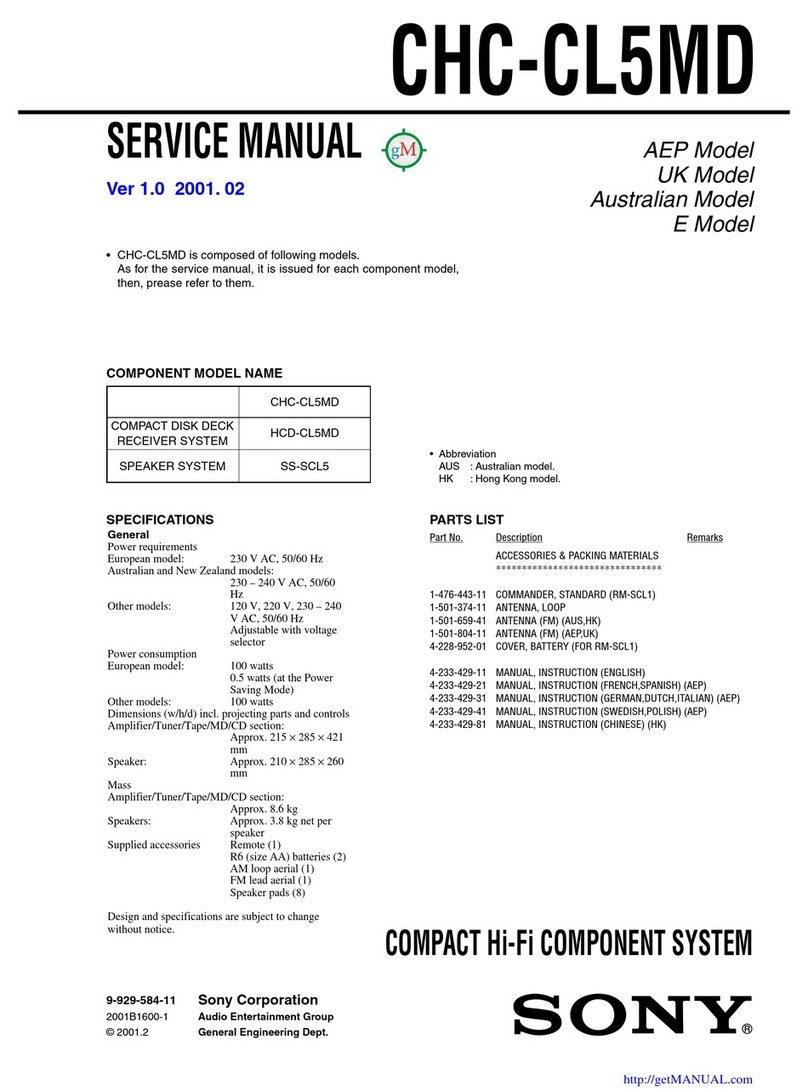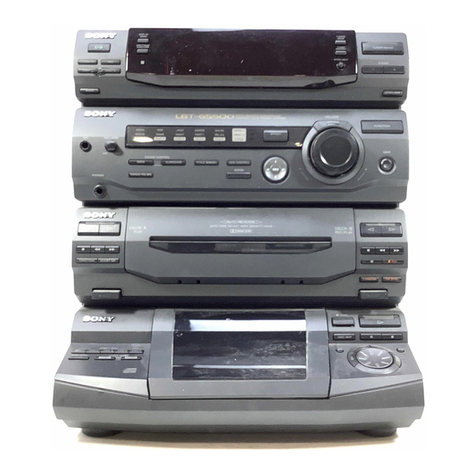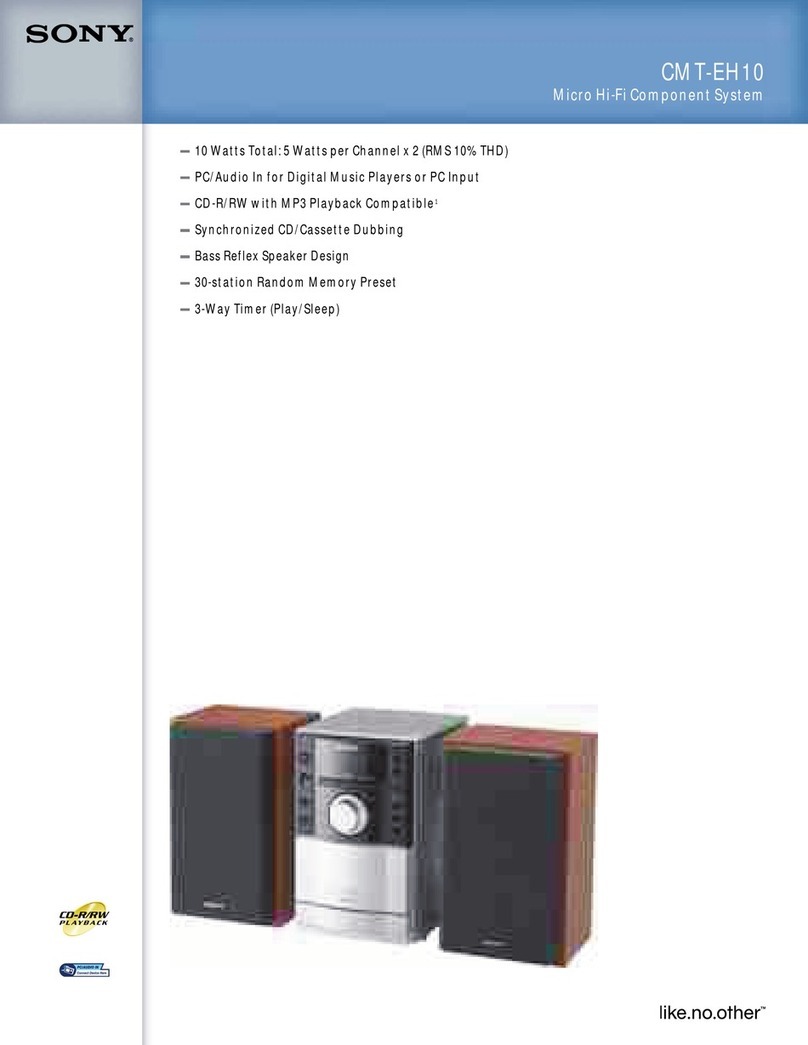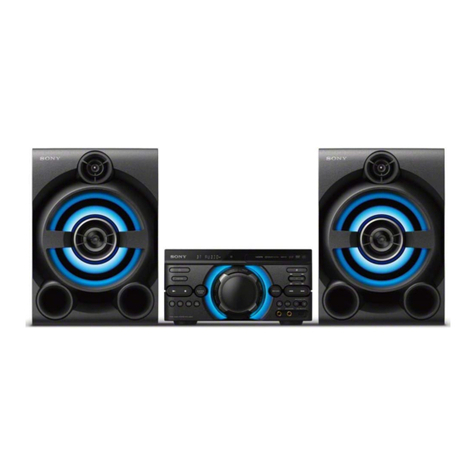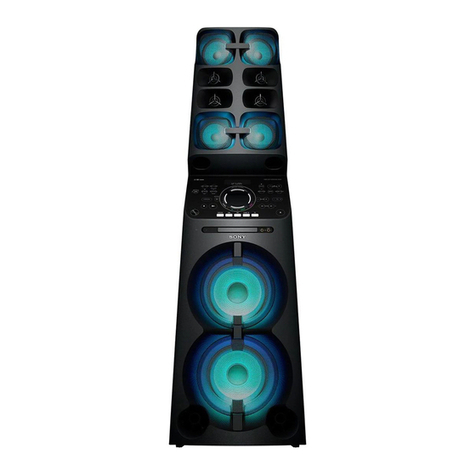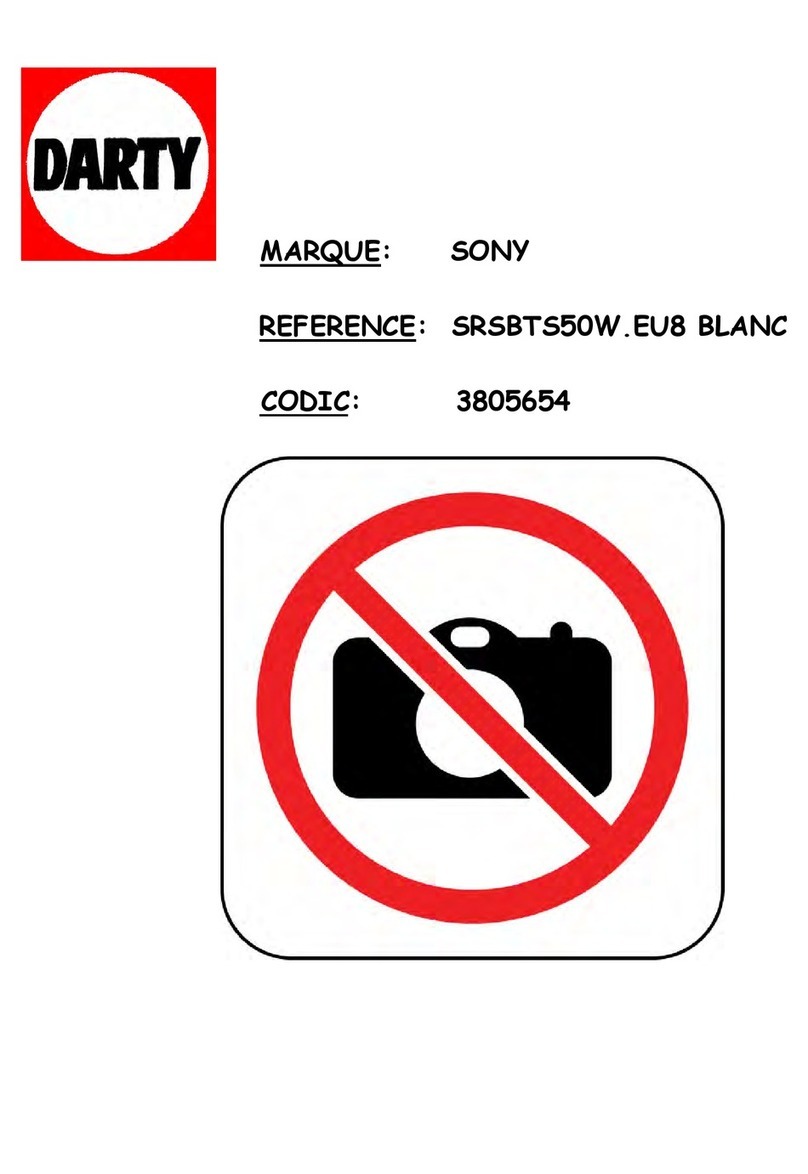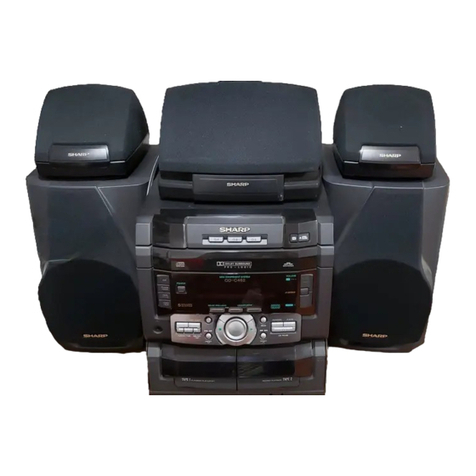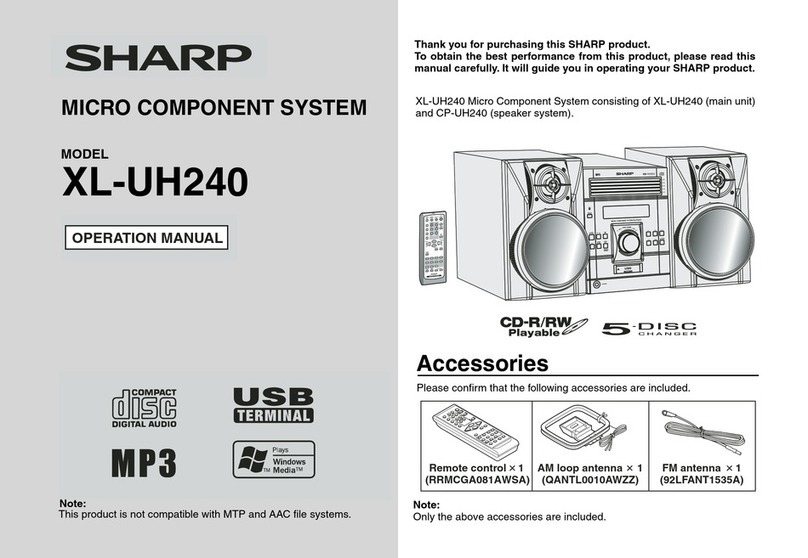3
NOTES ON HANDLINGTHE OPTICAL PICK-UP BLOCK
OR BASE UNIT
The laser diode in the optical pick-up block may suffer electrostatic
break-down because of the potential difference generated by the
charged electrostatic load, etc. on clothing and the human body.
During repair, pay attention to electrostatic break-down and also
use the procedure in the printed matter which is included in the
repair parts.
The flexible board is easily damaged and should be handled with
care.
NOTES ON LASER DIODE EMISSION CHECK
The laser beam on this model is concentrated so as to be focused on
the disc reflective surface by the objective lens in the optical pick-
up block. Therefore, when checking the laser diode emission, ob-
serve from more than 30 cm away from the objective lens.
LASER DIODE AND FOCUS SEARCH OPERATION
CHECK
Carry out the “S curve check” in “CD section adjustment” and check
that the S curve waveform is output several times.
SAFETY CHECK-OUT
After correcting the original service problem, perform the follow-
ing safety checks before releasing the set to the customer:
Check the antenna terminals,metal trim, “metallized” knobs, screws,
and all other exposed metal parts forAC leakage. Check leakage as
described below.
LEAKAGE
The AC leakage from any exposed metal part to earth Ground and
from all exposed metal parts to any exposed metal part having a
returntochassis,must not exceed 0.5 mA(500microampers).Leak-
age current can be measured by any one of three methods.
1. A commercial leakage tester, such as the Simpson 229 or RCA
WT-540A. Follow the manufacturers’ instructions to use these
instruments.
2. A battery-operated AC milliammeter. The Data Precision 245
digital multimeter is suitable for this job.
3. Measuring the voltage drop across a resistor by means of aVOM
or battery-operatedAC voltmeter. The “limit” indication is 0.75
V, so analog meters must have an accurate low-voltage scale.
The Simpson 250 and Sanwa SH-63Trd are examples of a pas-
sive VOM that is suitable. Nearly all battery operated digital
multimeters that have a 2V AC range are suitable. (See Fig. A)
Fig. A. Using an AC voltmeter to check AC leakage.
0.15
µ
F
To Exposed Metal
Parts on Set
1.5k
Ω
AC
voltmeter
(0.75V)
Earth Ground
1. SERVICING NOTE .......................................................... 4
2. GENERAL .......................................................................... 5
3. DISASSEMBLY
3-1. CD Base and Base Unit .......................................................... 7
3-2. Rear Panel ............................................................................. 7
3-3. Bottom Cover and Front Panel Block ................................... 8
3-4. Door Cover assy and Mechanical Deck (Cassette) ............... 8
4. MECHANICAL ADJUSTMENTS ................................ 9
5. ELECTRICAL ADJUSTMENTS ................................. 9
6. DIAGRAMS
6-1. Circuit Boards Location ...................................................... 13
6-2. Schematic Diagram – BD Section – ................................... 14
6-3. Printed Wiring Board – BD Section –................................. 15
6-4. Schematic Diagram – Function Section –........................... 16
6-5. Printed Wiring Board – Function Section – ........................ 17
6-6. Schematic Diagram – Tape Preamp Section – .................... 18
6-7. Printed Wiring Board – Tape Preamp Section – ................. 19
6-8. Schematic Diagram – Display Section –............................. 20
6-9. Printed Wiring Board – Display Section – .......................... 21
6-10. Schematic Diagram – Relay Section – .............................22
6-11. Printed Wiring Board – Relay Section – .......................... 23
6-12. Schematic Diagram – Power Section – ............................ 24
6-13. Printed Wiring Board – Power Section – ......................... 25
6-14. Schematic Diagram – RDS Section –...............................26
6-15. Printed Wiring Board – RDS Section –............................ 27
6-16. IC Block Diagrams ........................................................... 28
6-17. IC Pin Functions ............................................................... 30
7. EXPLODEDVIEWS
7-1. CD Section .......................................................................... 33
7-2. Rear Panel Section .............................................................. 34
7-3. Front Panel Section ............................................................. 35
7-4. Mechanism Deck Section (Cassette) .................................. 36
7-5. Base Unit Section ................................................................ 37
8. ELECTRICAL PARTS LIST ........................................ 38
TABLE OF CONTENTS

